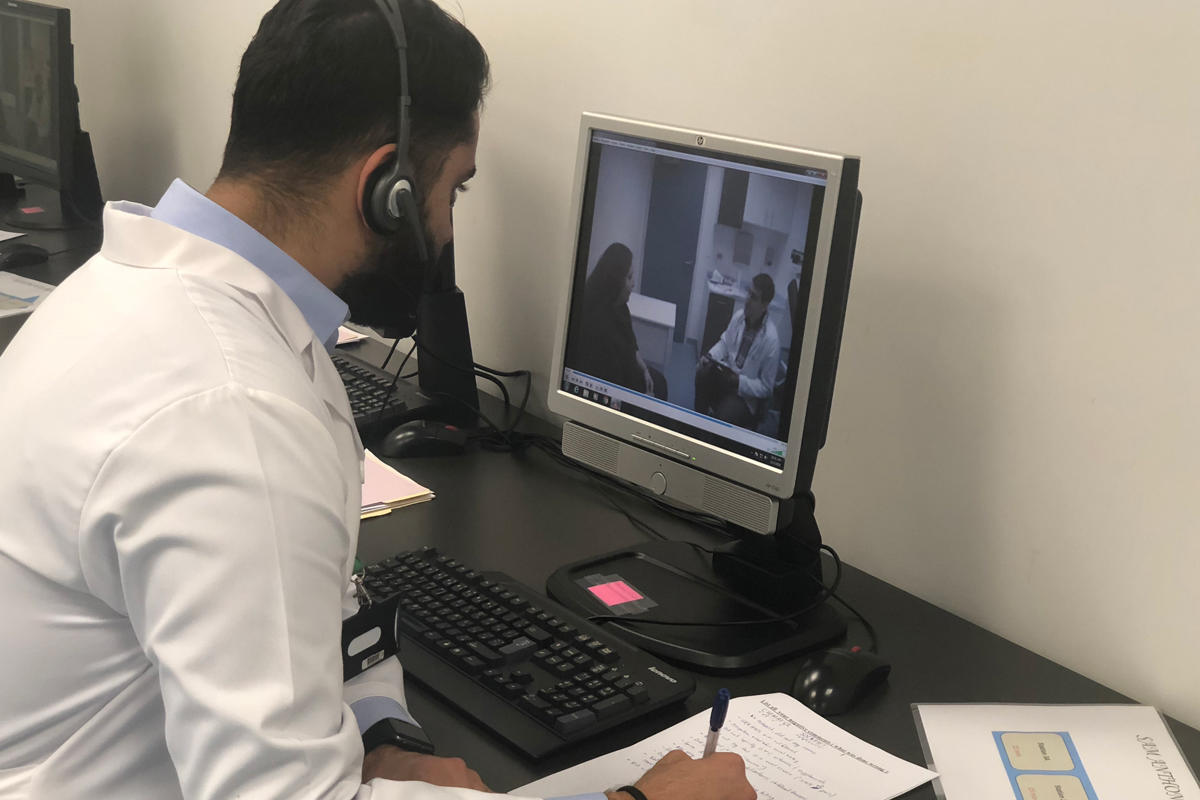Interdisciplinary Collaboration Gives Med Students a Leg Up
Several departments work together to bring the OSCE exams to medical students.
Sixty-three first-year students at the Gilbert and Rose-Marie Chagoury School of Medicine can now take the Objective Structured Clinical Examination (OSCE) with confidence after having sat for a practice OSCE exam earlier this month.
OSCEs aim to assess medical students’ clinical skills – such as taking a patient’s history, conducting a proper physical exam, and excelling in communications, professionalism, and clinical reasoning – during live mock patient appointments.
The aim of OSCEs, said Dr. Nadia El Asmar, director of the OSCE and Clinical Skills Program, is for students to practice in a safe and protected environment where they can be prepared and ready before seeing real patients.
OSCEs were first held at LAU in 2009. All such practice exams and trainings take place at the Byblos campus’ state-of-the-art Clinical Simulation Center (CSC), which is accredited by the Royal College of Physicians and Surgeons of Canada. The director of the CSC, Dr. Vanda Abi Raad, notes that the center “offers great services for health-science students and from other LAU schools as well as non-LAU participants.”
During the exams, students make rounds at several stations, where they are required to diagnose different clinical situations acted out by standardized patients (SPs) – healthy people trained to portray the personal history, physical symptoms, and emotional characteristics of actual patients.
Students are required to take the patient’s history, perform a physical exam, then make a diagnosis while both the SP and examiner assess their skills, provide feedback on their performance, and identify strengths and areas to be improved.
“The OSCE is an assessment tool with an important component of learning,” said Dr. El Asmar, adding, “As a patient, you feel more confident when dealing with a physician who has the knowledge with the appropriate clinical skills and professionalism.”
Despite this round of OSCEs being geared toward medical students, as with many initiatives at LAU this one embraces interprofessionalism.
For example, in preparation for these exams, 35 male and female SPs of all ages received training by practicing certain scenarios under the supervision of Associate Professor of Theater Lina Abyad. The training aims at helping the SPs demonstrate a behavior that is as close as possible to a real situation. “It’s incredible that in the same exam we are covering two different aspects: diagnosis and communication skills,” said Dr. Abyad.
The training worked – after the practice OSCE exam, Med I student Aimee Daccache said, “I totally believed the standardized patient. He looked really in pain, which helped me show more empathy toward him.”
Also involved in carrying out OSCEs is the LAU IT Department, which set up an audiovisual system that follows the students’ progress and gives them instructions through a series of recordings. It also records the students’ performance and stores the footage on a server, allowing examiners to review it later and add annotations. Moreover, the system is accessible from anywhere, so the examiner can do the assessment from their own office or clinic, the control room, or anywhere in the world. The system was made possible with a grant from the organization American Schools and Hospitals Abroad (ASHA).
“We are here to support the process and ensure that everything is working properly,” said the IT Department’s Lead Data Analyst Tarek Sarouni.
“Since no such project has been implemented before in Lebanon, the IT team depended on initiative and previous technical expertise in the successful deployment of the HealthCare Simulation Management System,” said Assistant Vice President for Information Technology Camille Abou-Nasr.
“Given that the system will serve many medical programs from different health schools, the key to its success was professional project management, communication, and collaboration between all involved parties: physicians, medical professionals, students, Facilities Management, and the IT team,” added Director of IT Applications & Solutions Roula El Hage.
“The success of an OSCE is the result of a collaboration between all stakeholders – clinical teachers, faculty, staff, IT and the Performing Arts,” notes Dr. El Asmar.
Through this interprofessional collaboration among schools and departments at LAU, medical students have the chance to become familiar with everyday clinical situations at an early stage. “The OSCE is a great anticipation of what to expect at the hospital, and it helps us learn how to act and react,” said Med I student Elio Feghali.
But perhaps most importantly, OSCEs drive home the essential skill of empathy in future physicians. “As an examiner, I make sure that the students are asking about the patient’s history and all aspects of the diseases, while showing empathy and care,” said Clinical Professor Alain Sabri, chair of the Department of Otolaryngology and assistant dean for faculty development.
Dr. Abyad agrees: “Besides knowledge, the emphasis on empathy, communication and professionalism is going to make a difference in the physicians graduating from LAU.”

